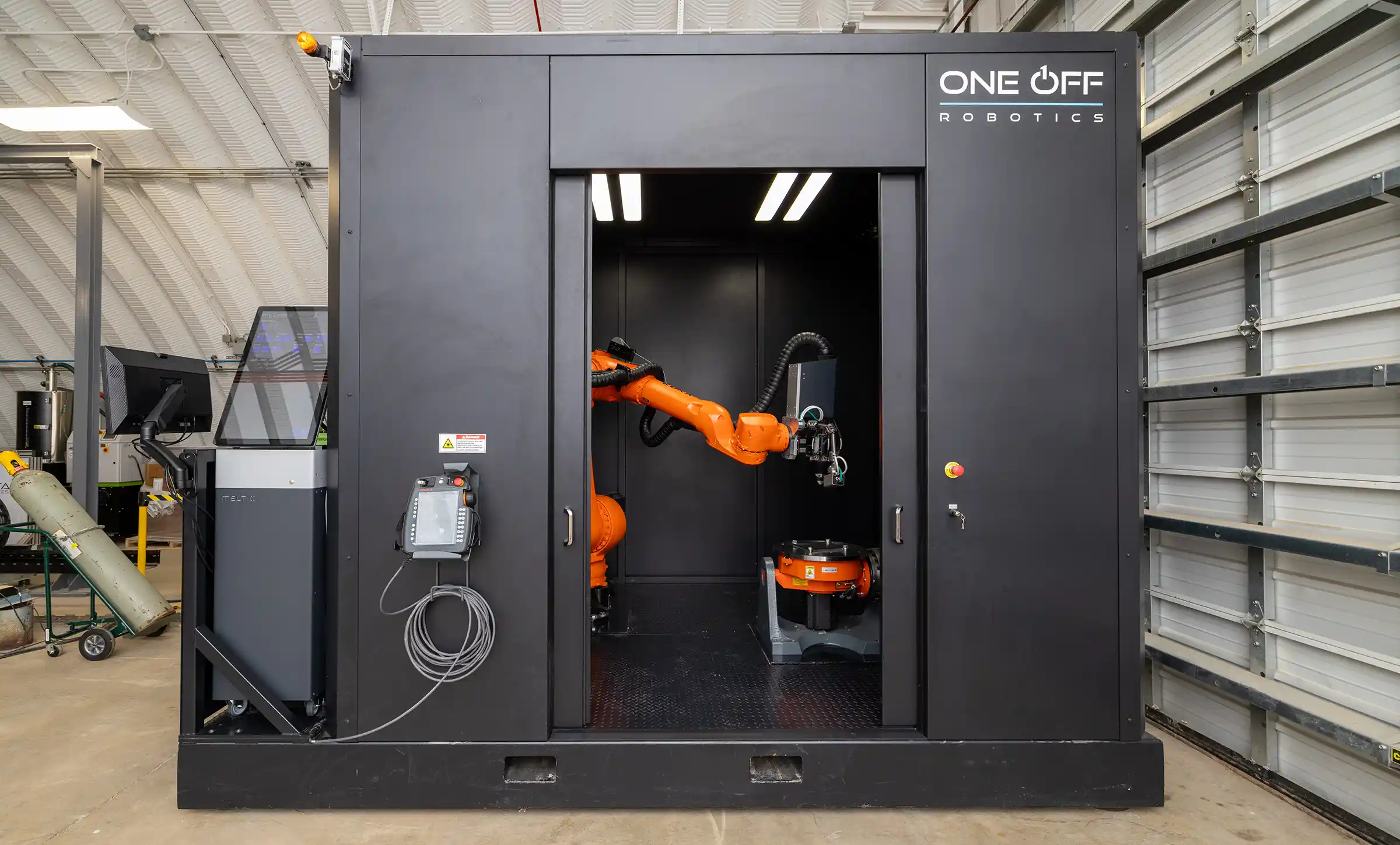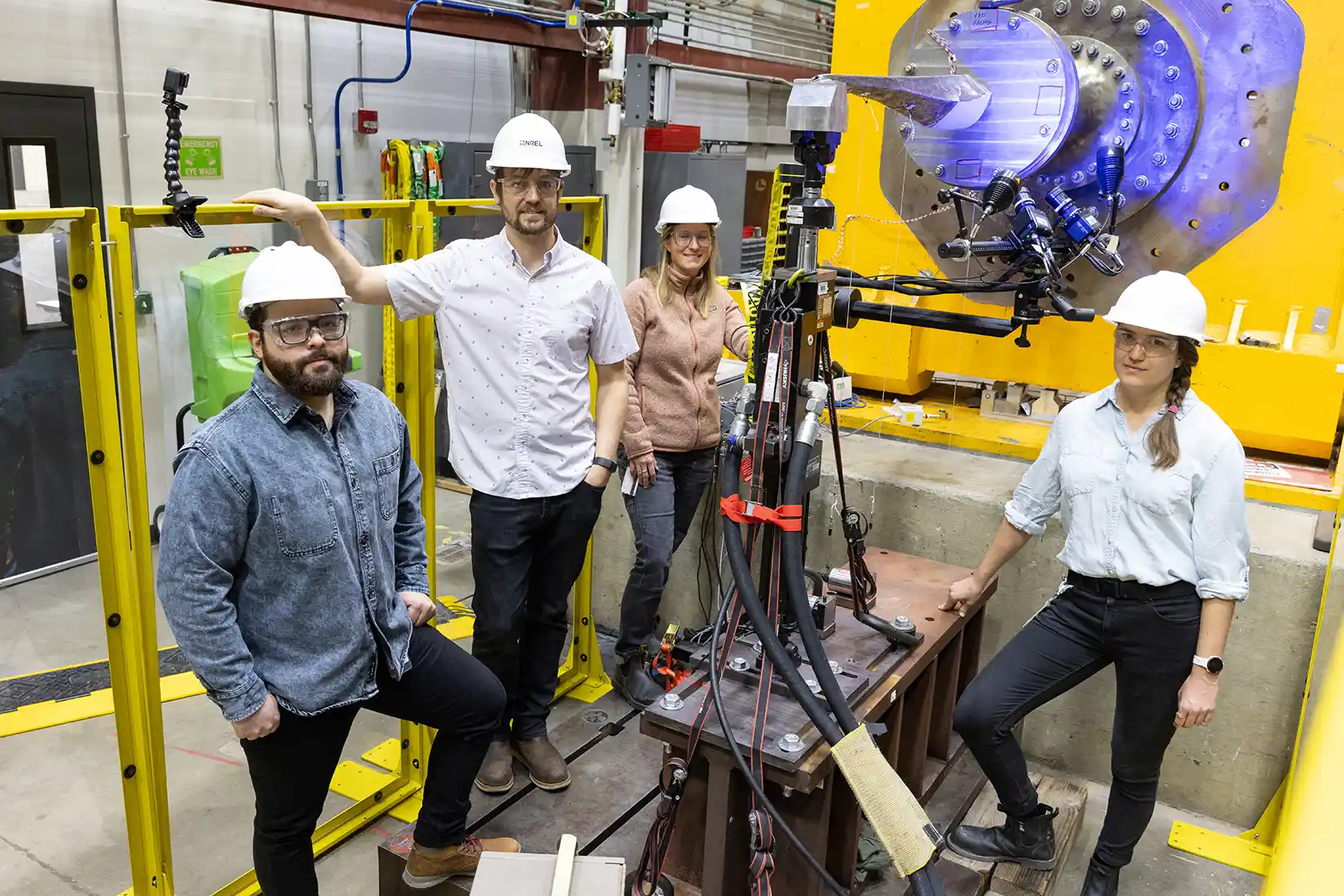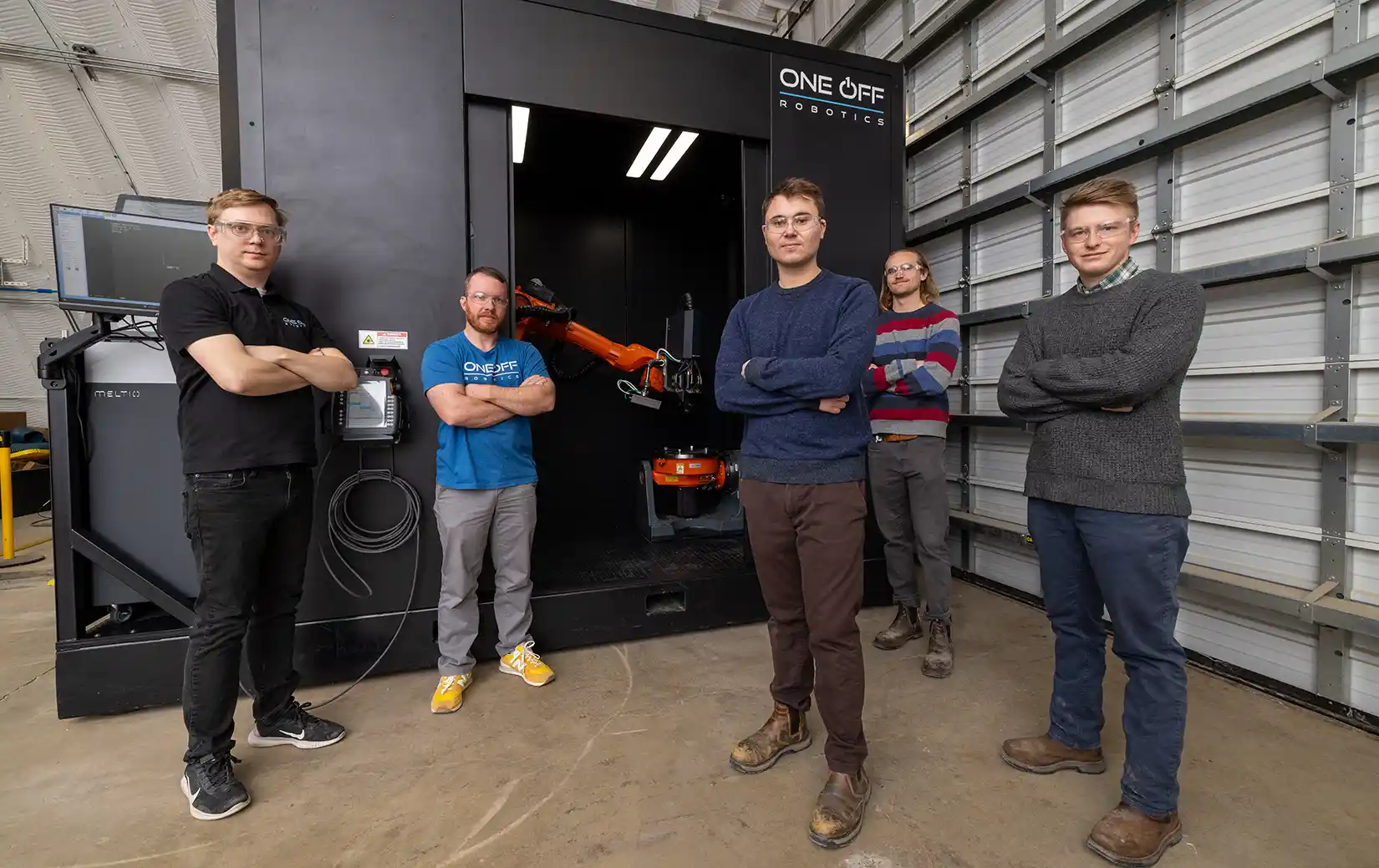Heavy Metal Meets High Tides With 3D Printer
New Tool Lets Researchers and Partners Cut Prototyping Costs, Wait Times, and Design Barriers for Ocean Energy Technologies and More
Aug. 14, 2025 | By Caitlin McDermott-Murphy | Contact media relations
When it comes to marine energy, metal is metal.
"Compared to plastic, metal components can withstand five to 10 times as much force," said Paul Murdy, a mechanical engineer at NREL.
Withstanding force—including the coastline-eroding, ship-tossing, surfer-dragging forces produced by ocean waves—is critical for marine energy devices, which are designed to generate energy from waves, currents, and tides.
Those movements are powerful—capable of providing up to 60% of the country's electricity needs if we could capture all of it (which, spoiler alert, we cannot). But even a small portion of that energy could provide a reliable and affordable source of electricity for coastal security and maritime industries, like seafood farms and scientific research.
So, why are these devices not already powering American homes and businesses?
The budding marine energy industry has yet to zero in on the most seaworthy designs, in part because it can be expensive and time-consuming to design, build, and test each new full-scale prototype.
Or it was until now—thanks to a new laser-powered metal three-dimensional (3D) printer at NREL's Flatirons Campus.

The laboratory's new 3D metal printer, pictured here, quickly produces a wide variety of component shapes for ocean-based technologies, so researchers and partners can rapidly test different designs and identify the best. Photo by Gregory Cooper, NREL
It can quickly etch out the metal components that form the skeletons within marine energy machines, so researchers can test their metal's mettle with minimal cost and waste.
"We have a good amount of experience doing rapid prototyping and additive manufacturing with smaller machines," said Casey Nichols, an NREL research engineer who works with Murdy to design, build, and test novel marine energy technologies. "But getting a larger 3D printer lets us do more at-scale research."
That means the team can quickly determine whether a specific component benefits from 3D metal manufacturing (some could, for example, be cheaper or faster to build using this technique). They can also easily build and trial whole, full-scale prototypes—including those with unusual geometries—so developers can rapidly confirm their device's strength and move it closer to commercial success.
The new 3D printer can also help researchers outside marine energy to produce essential components for a variety of technologies—including water heaters, shipping or naval vessels, and aerospace tech—and produce parts in days, bypassing the six- to nine-month waiting period to purchase parts from dominant overseas markets.
A Machine for Marine Energy Maturation
NREL already owned a small fleet of desktop-sized 3D printers. But the new 3D printer—which was customized by Tennessee company One-Off Robotics and procured with funding from the U.S. Department of Energy—can build near-full-scale structures up to 1 meter long.
To operate the machine, researchers use a robotic teach pendant—a handheld device that functions much like a highly sophisticated video game controller—to monitor the code that runs its robotics and lasers. This step helps ensure the printer produces high-quality metal parts—including some that are typically too challenging to make with conventional 3D printers.
"There's a whole realm of possibilities for very complex metal part design that, until now, has been very hard for researchers to achieve," Nichols said.
Most conventional 3D printers have three axes. The new printer has eight, which allows it to print larger volumes and a wider variety of both conventional and unconventional shapes.
Nichols plans to use the printer to research different marine energy device designs, as well as more efficient and cost-effective methods to manufacture such devices. More affordable manufacturing processes means more affordable research and development, device production, and, potentially, more affordable energy, too.
"Using this technology, we can bridge the gap from conceptual design of advanced geometries to actual part generation and testing—taking things that were computer models to physical experiments."
— Casey Nichols, NREL research engineer
Material Differences
Murdy, who has worked with Nichols in NREL's Composites Manufacturing Education and Technology facility for more than six years, is focused less on manufacturing and more on materials. Specifically, he is working to understand which materials thrive best in different marine environments, including those that are especially salty, energetic, cold, or full of fast-moving debris.
"We need to work with metals because of their strength and corrosion resistance," Murdy said.
Murdy's metal of choice: stainless steel.
But stainless steel is not easy to melt and manipulate.
The lasers in the new 3D printer must reach temperatures of at least 2,500 degrees Fahrenheit—or as hot as the hottest magma. After the 1.2-kilowatt laser melts the metal, those droplets are then deposited in layers that bind and cool quickly. And, because the machine can rotate and tilt, Murdy and colleagues can create unusual shapes that cannot be easily replicated with conventional subtractive manufacturing processes (in which components are made by removing material from a larger block).
That customization is critical for an industry like marine energy where devices must be optimized for their environment. The forces exerted on something like an underwater tidal turbine can vary widely depending on whether it is installed on a calm seabed or an energetic riverbed.
"For example, you could design tidal turbine blades to work under certain flow conditions," Murdy said, and adapt the design to perform optimally in different water speeds.
Nichols also hopes to identify designs that could lower the cost to produce a device or increase a blade's structural integrity—two goals that would leverage NREL's deep expertise in tidal energy.
But even though the new 3D printer comes with big benefits—like fast production for fast prototyping—the manufacturing process can also affect a material's performance. That is why Murdy is keen to assess individual components and whole devices.
"My project takes a holistic approach to understanding everything from design, manufacturing, and through to deployment," Murdy said. "I'm exploring that whole space to understand where this technology is the most valuable and the bounds of how we can use it."

Metal 3D printers also solve a modern problem: They can print some parts, like some hydropower components, that used to be common but are now hard to find and can cost developers extra money and time to acquire. Photo by Joe DelNero, NREL
More Than Just Marine Energy (Heaters, Spacecraft, Propellers, and More)
Both Murdy and Nichols are focused primarily on helping marine energy technologies achieve commercial success. But the new metal 3D printer could also build critical components for shipping and naval vessels, heat exchangers, air and spacecraft, automobiles, and equipment used to make or process pharmaceuticals, food, and cosmetics.
Both researchers at NREL and the laboratory's industry partners can use the machine to perfect parts for a wide range of technologies.
"NREL is very unique,"" Murdy said. "We often have very specialized needs for one-off components that we need manufactured."
For example, one internal team is researching how to build more efficient water heaters, and the new 3D printer could help them rapidly design, build, and test new components.
"Before the lab welcomed our new rapid prototyping machine, our team often had to wait up to nine months to get just one metal part. With a system like this, you can get that part in a matter of days."
— Charles Candon, NREL researcher
"There's very little casting and forging in the United States right now," Candon said. "With a system like this, you can get that part in a matter of days."
Since its launch in 2018, the team at One-Off Robotics—the company that created NREL's new printer—has customized 3D printers to support work in dozens of commercial and governmental organizations. Their printers have been used to create fitting valves and pipes for extraction equipment, propellers for shipping and naval vessels, engines for aerospace and automobile companies, and more.
Metal casting is still preferable to 3D printing when a company must produce equipment in bulk (like, for example, fabricating 10,000 parts in one go). But 3D printing wins out in rapid prototyping and when global supply chains are not reliable, according to Candon. "During a supply shortage, this can be an efficient way of producing lower volumes of things," Candon said.

Without this new 3D printer, the laboratory’s researchers typically waited up to nine months to receive one metal part. Now, they can print one in a few hours to a few days. Photo by Gregory Cooper, NREL Photo by Gregory Cooper, NREL
3D printing can also create parts that were commonly manufactured 50 years ago but are nowhere to be found today—despite still needing to be repaired and replaced. Some hydropower components, like steel runners, for example, are only produced overseas and can take years to arrive according to the National Hydropower Association. That can cause facilities to lose precious income and communities to lose precious energy.
Because tools like One-Off Robotics' 3D printer are fully customizable, they can adapt to solve manufacturing problems for a variety of industries.
NREL is bringing that solution to marine energy—and beyond.
Learn more about how to work with NREL's 3D printing team.
Share
Last Updated Aug. 14, 2025
